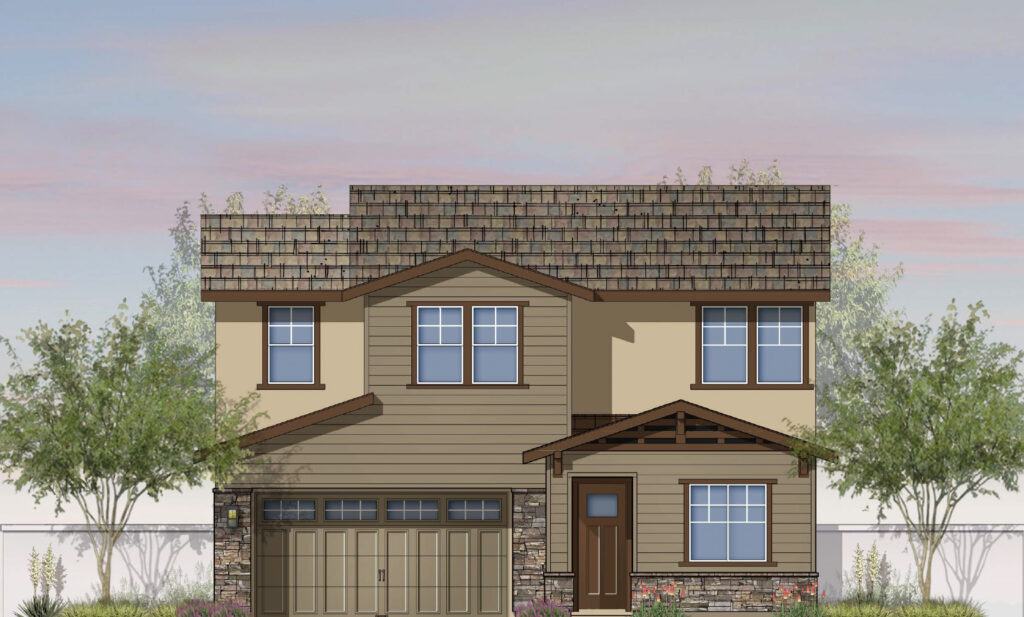How will this plan uphold Claremont’s character and priorities?
- Low density: The plan reflects the “low density” nature of most of Claremont’s neighborhoods. It is proposed at 5.6 units per acre, which is consistent with the City’s General Plan definition of low density.
- Architecture: Trumark studied Claremont neighborhoods very closely for inspiration and direction. View plans and architectural styles here.
- Workforce housing: The plan includes among Claremont’s first Accessory Dwelling Units (ADUs), a creative, low-impact approach to housing young professionals, teachers and students that helps meet affordability mandates.
How does this plan differ from past proposals?
- Parking: The new plan moves overflow park parking into the proposed community and away from existing homes and streets.
- Setbacks: We’ve moved homes away from the southern edge of the property, increasing setbacks from nearby homes to 65 feet.
- Walls & Private Access: We’ve removed any gates that could limit public access through the site. Perimeter walls along Forbes and the Sports Park were also removed to allow homes to face the community and create an open, engaging feel.
- Commitment to listening: We’ve already begun a robust listening process with neighbors and Claremont stakeholders; will explore other potential ideas.
What are ADUs and are they right for Claremont?
- Accessory Dwelling Units (ADUs) are commonly referred to as “granny flats” or “in-law” units.
- ADUs are important because they provide an individual or couple with a self-contained unit, but at an affordable price.
- They have been identified by state as important to alleviating the current housing crisis.
- ADUs generally have fewer impacts than traditional projects because they target individuals or couples, not families.
- The La Puerta plan calls for 6 ADUs to be incorporated within the single-family homes.
Will the project undergo environmental review to study things like traffic and water?
- Yes. The city of Claremont is conducting a comprehensive environmental study of the project.
- City will require Trumark to fund improvements or programs to limit or eliminate impacts, including traffic.
- Public will have ample opportunity to review and comment on the studies.
Is this project low density?
- Yes. It is proposed at 5.6 units per acre. The City’s General Plan defines low density as between about 2 and 6 homes per acre.
Is Trumark proposing to buy both the school site and the sports park?
- No. Trumark’s plan only includes the approximately 10-acre former school site.
- Trumark is not proposing to purchase any of the sports park site.
- There are no plans to rezone, alter or otherwise change the sports park.
Is the former school site and the adjacent sports park one parcel of land? If so, does that mean Trumark is purchasing the park?
The former school property and La Puerta Sports Park are currently one 19-acre parcel, as designated by the Los Angeles County Assessor. Trumark is proposing to purchase only the former school property, which is about 10 acres. The park land – about 9 acres – is not part of the deal and will remain under the ownership of the Claremont Unified School District.
In fact, as a condition of the sale, the two parcels must be legally subdivided before the purchase can be completed.
That means there will be two distinct parcels: 1) the approximately 10-acre former school site, where Trumark is planning a new neighborhood and 2) the existing sports park, which will remain in its current form.
Why did the proposed site size change from 10.8 acres to about 10 acres?
Trumark explored a plan that would have made improvements to La Puerta Sports Park, including new public parking and expanded soccer fields. We proposed to purchase about an acre of the park to complete and facilitate these improvements. That plan was withdrawn based on community feedback.
Who is Trumark Homes?
- Trumark Homes is a 30 year old family-operated homebuilder in Southern California with a successful track-record of building consensus-based infill residential communities near job centers.
- The company recently entered into an agreement with the Claremont Unified School District (CUSD) to purchase the former La Puerta Middle School site.
- The goal is to create a beneficial future for the fenced-off campus, which closed as a middle school in the late 1970s.





